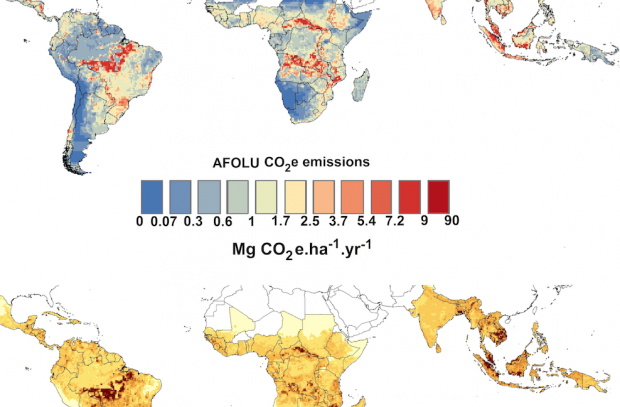
Scientists published detailed land sector gross emissions data and corresponding uncertainties for the tropics, enabling better estimates of mitigation potential and data-driven decision-making needed to meet the Paris Agreement goals.
According to the most recent Intergovernmental Panel on Climate Change (IPCC) Assessment Report, global greenhouse gas emissions must be cut by 41-72% below 2010 levels by 2050 in order to have a likely chance of limiting the increase in global mean temperature to 2°C. This requires unprecedented changes in all the emission sectors, particularly in energy systems and improved land use management practices.
The land sector accounts for about a quarter of net anthropogenic GHG emissions, mainly from deforestation, agricultural emissions from soil management practices, and livestock. Likewise, the land sector is key in global mitigation strategies, as it can potentially contribute 20-60% of cumulative abatement to 2030.
Not surprisingly, the Paris Agreement endorses emissions mitigation in the land sector and long-term storage in biogenic carbon as necessary means to achieve greenhouse gas neutral economies in the second half of this century. Countries have readily included the land sector as a fundamental pillar of their mitigation commitments through their Intended Nationally Determined Contributions (INDCs) and NDCs. Tracking progress toward these commitments requires shared understanding of mitigation potentials, trust in data and associated uncertainties, and implementation assistance at local, national, and landscape scales.








